Raising Cornish-Cross Meat Birds: Week 3
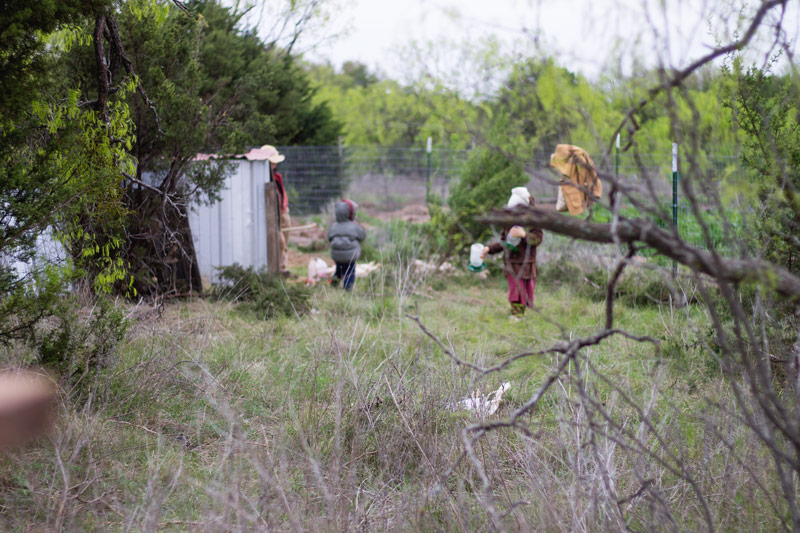
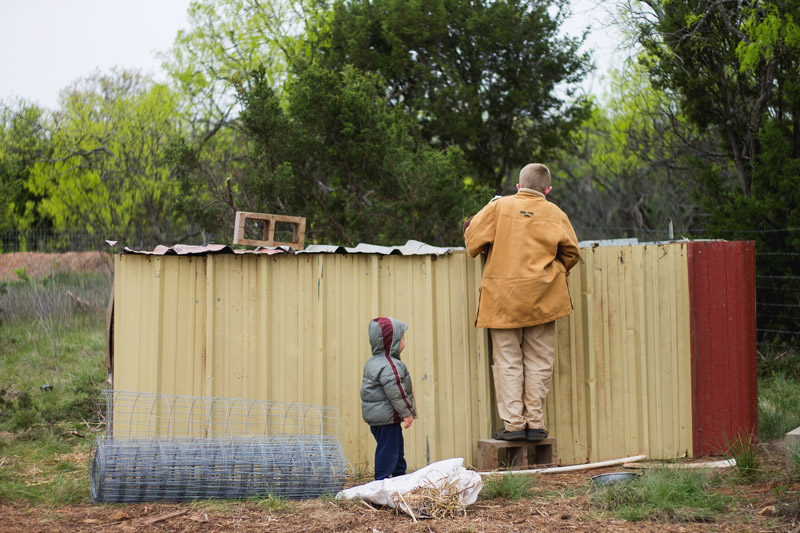
So the big news, since last week, is that we moved the birds out to their pasture run. First, Stewart put together what seems to be a fairly predator-proof house made from free pallets, inexpensive Craigslist tin, and a window that lets them out of their house in the morning.
The part off the run we haven’t yet finished is to put the bird netting overhead to protect from hawks.
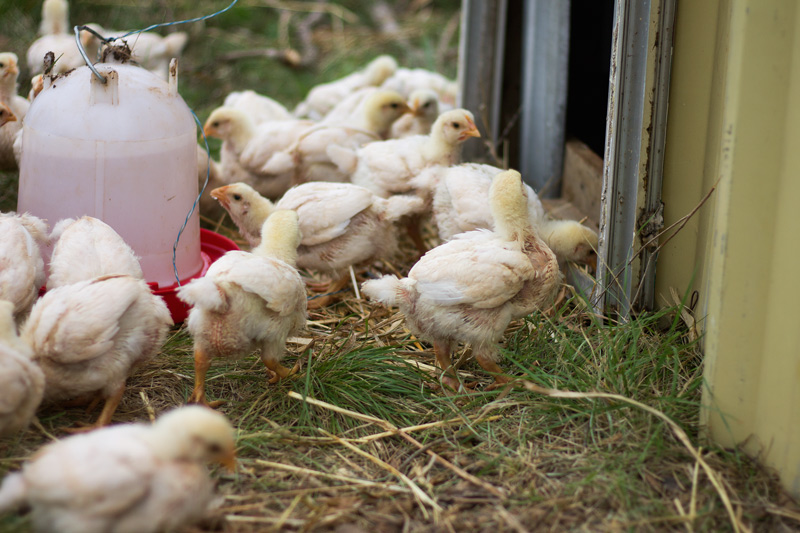
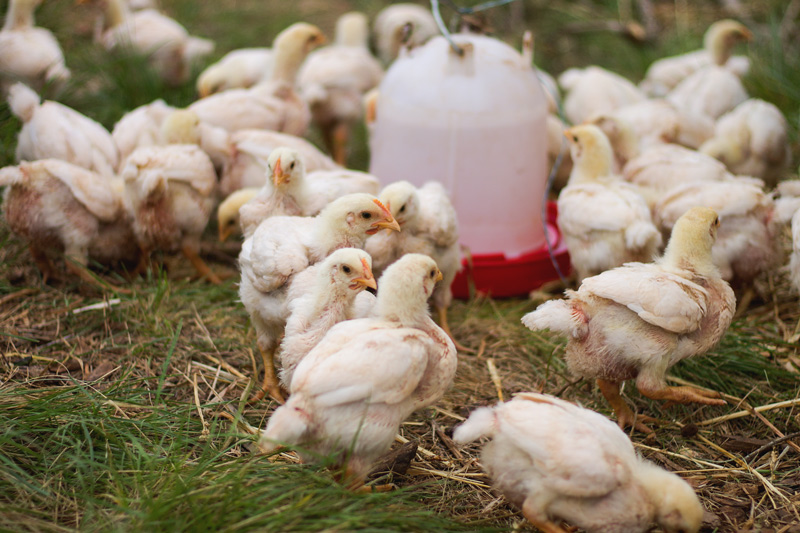
To give you an idea of how fast these guys grow, when we first let them out on Monday they did squeeze through the garden fence that is on one side of their run. It took some squeezing but when they saw me in the garden they assumed I had food and came running. We got them back in, fed them in their run, and they stayed put for the rest of the day. Tuesday we left them in their house.
By Wednesday we let them back out and it doesn’t look like they’ve gotten through since and I suspect that is because, days later, they are now just big enough to not be able to squirm their way through. So, since Wednesday, the birds are let out first thing and spend the day outdoors scratching and such, just like our laying flocks.
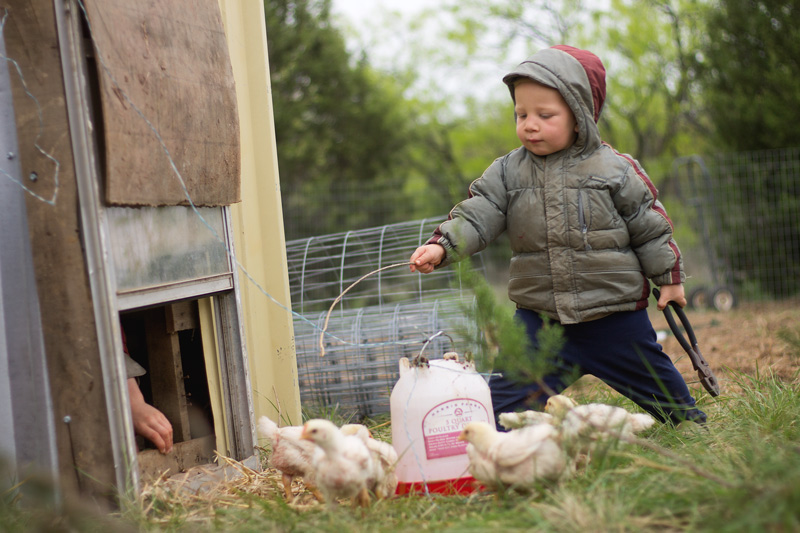
The other major change for these birds is their diet. We are nearing the bottom of the organic chick grower we purchased and most of their food is now soaked and ground local grain plus all of the whey, skimmed milk, and greens they can eat. And, of course, any bugs and things they scavenge in their run.
The only other thing I will mention was something Stewart said: “I don’t know that we’ll try the Cornish-Cross again.” This kind of echoed one of the comments we got in our last Cornish-Cross post and certainly my own thoughts. Stewart and I had both noted their seemingly unnatural hunger and weight gain. We only feed them about twice a day but I suspect these guys would eat themselves silly all day long if given the opportunity.
Our thoughts may change but the bottom line is that these birds are bred to be fast-growing, heavily-fed, unnaturally (to us) proportioned birds. We both agreed we’d be happy to wait the extra weeks it takes for the birds to get to butchering size – and the feed that may require – for something a bit different. But again, we’ve got some weeks left before the end of the road and who knows, maybe we’ll change our minds.
At last count, only by the Lord’s sustaining mercies, forty birds are still out there.

What a lovely flock of chicks, table meat very soon.
Just a warning……make sure any overhead wire mesh (hawk protection ) is strong enough to prevent a fox jumping on it to cave in and then kill them all…..happened to a friend’s chicken tractor, 50 chicks all killed.
Wow, didn’t think of that. Thanks for the tip before I put it up! 🙂
Hi Stewart, another little help is to plant some green pick ( spinach, silverbeet etc.) Into a space that has boards about 4 inches high for the long sides , held securely in place , you then cover the whole seedlings area and the boards with bird wire, the greens grow through the wire and the chicks have lots of pick without scratching out the plant’s. The setup I saw was about a 10 inches wide and 8 foot long .
I don’t know how the wire mesh was secured to the boards but I am sure you can work out something, the boards also have to be staked inside so they can’t collapse onto the plants if the chooks try to stand on them.
That’s a neat idea too. Thanks for sharing it.
My daughter raises meat chickens and the ones she loves are orph..something like that. They grow into pretty large birds and she says they are the easiest to keep. She keeps breeding pairs so that by the time one group gets put in freezer camp, she will have another group of eggs ready to incubate. I’ve helped with preparing them for the freezer minus the killing, I won’t do that. I concur with the commenter that said make sure your netting can withstand a fox or raccoon trying to collapse it. I have hens for eggs and we buried the fence down pretty far to keep anything from digging under. I don’t remember if you butcher your own or take them to a processing plant. I can tell you from helping my daughter it pays to have a pan of very hot water to help with the feather removal and an ice bucket to throw them in afterwards. Some folks just skin them but my daughter likes keeping the fat on them for frying.
Love the picture of you and Stewart. 🙂
My daughter raised some chickens for a while; reading your adventures reminds me of some of hers. God bless you all.
We used homeopathic Arnica montana in the drinking water for our Cornish cross meat birds to heal some injuries. It’s also good for strengthening the heart, which tends to be weak in this fast-growing breed. We’ve raised cornish cross a few times and the batch that received the homeopathic Arnica was the liveliest batch that acted the most like normal chickens out of all the batches we’ve raised.
Katie – Wow, that’s really great to know! I’ll have to remember that one. 🙂
We are a family of ten. We do eat a lot of meat, my husband isn’t a fan of eggs or legumes and it’s a very meat and potatoes type diet. For our family the Cornish cross is the most economical and best fit for us. While I love the idea of a more natural bird the reality is that I have to feed a large family on a budget, the Cornish cross is affordable for us and is healthier than buying chicken from the grocery store. I think if my family didn’t eat so much meat it would work better to have heritage breeds. We have tried in the past and found there just wasn’t enough meat on the birds for us. As it is we raise around 100 Cornish cross a year. This year we are having a year of rest from chickens a weasel recently killed our layers and we decided that we were going to take a break from all chickens. So many families have so many dynamics and priorities. I enjoy watching what works best for your family on this blog.
Sarena – I completely understand where you are coming from. I still think we’re not going to know how we really feel until butchering time comes and we can truly count the cost. Plus, this is our first time so there is no fair comparison. I really appreciate hearing your experience with the cornish cross. Thanks for sharing!
When my daughter butchers her meat chickens or when one of her laying hens becomes non-productive or when she has an aggressive rooster, she picks the ones she will freeze but she has me pressure can the tougher birds and some of the meat birds. She uses the meat in soups and dumplings. I also made her bone broth and plain chicken broth and we can that too. She has store room full of food that I have canned for her, including meat both that she raises and those they hunt. I wonder do you guys can any of the meat you raise?
Hi Jeannie!
Wow – what a blessing that must be to your daughter! In answer to your question, yes, we do can our meat. Beef in particular gets canned since it is a large animal. Chickens I’ve canned bone-in for easiest preparation and like getting meat + broth in one jar.